After a brief explanation of the science behind how a gun fires, Destin from Smarter Everyday, delves right into the science behind capturing gun fire with a camera. What makes it even cooler is that some of these guns have multiple feet of muzzle flash pouring out of their barrels along with a bullet traveling at speeds ranging from 800 to 4000 feet per second. Watch the following video tutorial to see how the guys are able to capture speeding bullets and muzzle flash:
There’s also a mention of safety, of course, considering that the group of guys working with Destin in the film are essentially firing high powered guns into pitch blackness. If you consider attempting this, use extreme caution.
Now for the science. To get his camera synced to fire when the gun fires, Destin ingeniously assembled a system which employs a piezoelectric transducer that he mounted on a wooden box, a pulse generator, and a flash head. The piezoelectric transducer takes the acoustic energy from the gun firing and sends it into pulse generator which converts the acoustic energy and fires the flash and camera. The result, some pretty awesome high-speed photography:
While all of this looks relatively easy and a whole lot of fun, don’t throw caution to the wind. As Destin points out, unless you are highly trained with weapons, it’s best to get some training under your belt before you go out and tackle this one. In case you missed it in the video, he uses a remote trigger on his DSLR for shots that were taken down range from the gun.
For further training on high speed photography and other tricks of the trade, a great resource is an eBook and video training program found here: Trick Photography and Special Effects
Like This Article?
Don't Miss The Next One!
Join over 100,000 photographers of all experience levels who receive our free photography tips and articles to stay current:

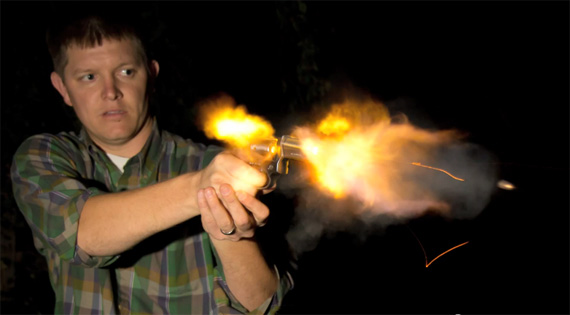
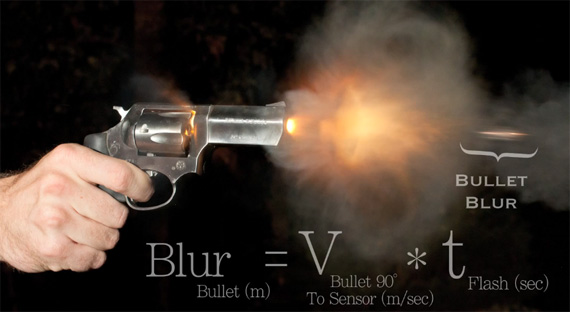
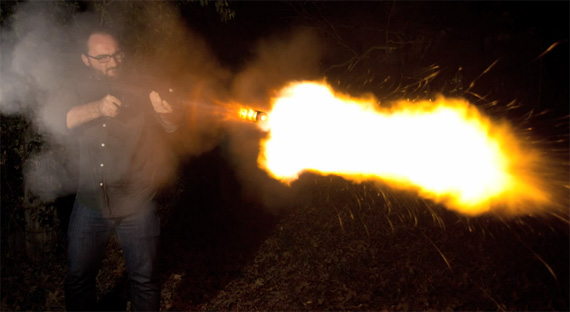

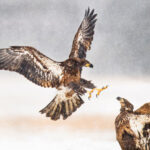
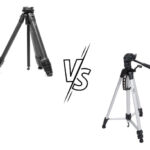

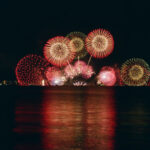
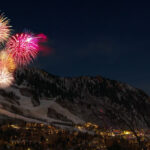
The picture with double subject in it, has double exposure, first exposure created by the gun flame flash and the second by the electronic flash itself, why it happened…? shutter time was too long, the shutter opened too soon after the powder explosion flash,
An interesting way to change the delay is to play with the microphone-to-gun distance, a bigger distance will create a longer delay, from the sound traveling from the gun to the mic.
Other variables are the shutter speed and the flash sync speed.
Also playing with the ISO speed of the “film” in the camera, will allow to lower the exposure level of the powder flames to something less bright.
A lot of variable to play with. FUN.